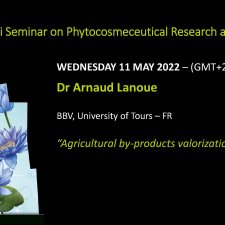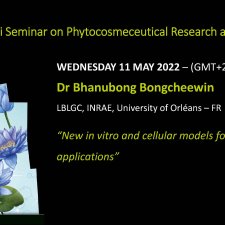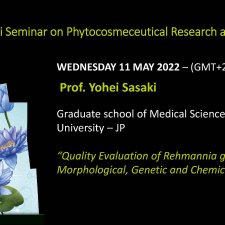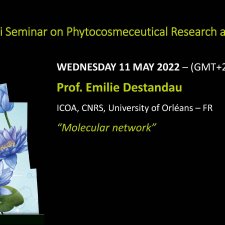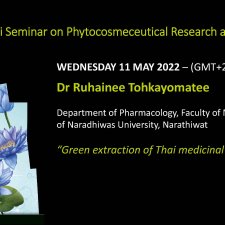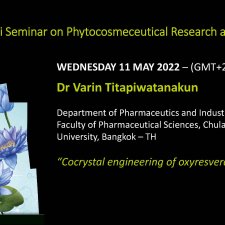Notice
Prof. Leslie Boudesocque-Delaye - Natural Deep Eutectic Solvents: fad or real opportunity?
- document 1 document 2 document 3
- niveau 1 niveau 2 niveau 3
Descriptif
NaDES appeared at the end of the 2010s following the work of Dai et al. Since then, the enthusiasm for these new green solvents linked to ionic liquids has continued to grow. Indeed, the unique properties of these solvents (solubilization capacity, biocompatibility, selectivity, stabilization) make them alternatives to classical solvents. While academic research is intense, few industrial applications have emerged, due to several technological obstacles: tedious preparation, extractive processes not well suited to the industrial scale, and limited options in terms of composition, in particular for non-polar system. At the SIMBA laboratory, we are specialized in the design of NaDES dedicated to the cosmetics field. Several applications have been developed for the recovery of microalgal or plant biomass. Spirulina (Arthrospira platensis) has been particularly studied within our group. At the same time, our laboratory has recognized know-how in the development of eco-designed extractive processes, which has enabled us to design innovative processes that simplify the use of NaDES while improving extractive performances.
Finally, in collaboration with the NMNS team (Pr E Munnier, Dr F Bonnier), we investigate formulability of these NaDES as well as the development of routine analytical approaches for the characterization of the extracts, in order to validate the compatibility of NaDES with industrial applications, in particular in the cosmetics field.
Thème
Dans la même collection
-
Dr Arnaud Lanoue - Agricultural by-products valorization
Winemaking generates different biomolecule-rich byproducts, including pomaces (skin and seeds), lees, as well as other solid wastes like grape canes.
-
Dr Bhanubong Bongcheewin - The Mint family (Lamiaceae) in Thailand- A potential material source for…
Lamiaceae is the large family, consisting of more than 7,000 species worldwide
-
Prof. Yohei Sasaki - Quality Evaluation of Rehmannia glutinosa by Morphological, Genetic and Chemic…
Previously, the medicinal plant, Rehmannia glutinosa, is grouped into two types in Japan. However, previous reports of genetic analysis of R. glutinosa in commercial products suggest the existence of
-
Prof. Emilie Destandau - Molecular network
Specialised metabolites constitute a high valuable resource of bio-active compounds that are highly sought after for pharmaceutic and cosmetic applications. However, plant extracts are very complex
-
Dr Ruhainee Tohkayomatee - Green extraction of Thai medicinal plants
Extraction is a major step to separate bioactive compounds from raw material and medicinal plants, which extracted by the pharmaceutical industry, either with conventional methods or modern
-
Dr Varin Titapiwatanakun - Cocrystal engineering of oxyresveratrol
Oxyresveratrol (ORV) is a compound found in the heartwood of Artocarpus lakoocha Roxburgh (Moraceae). It has diverse biological and therapeutic activities covering antioxidant, anti-inflammatory,

